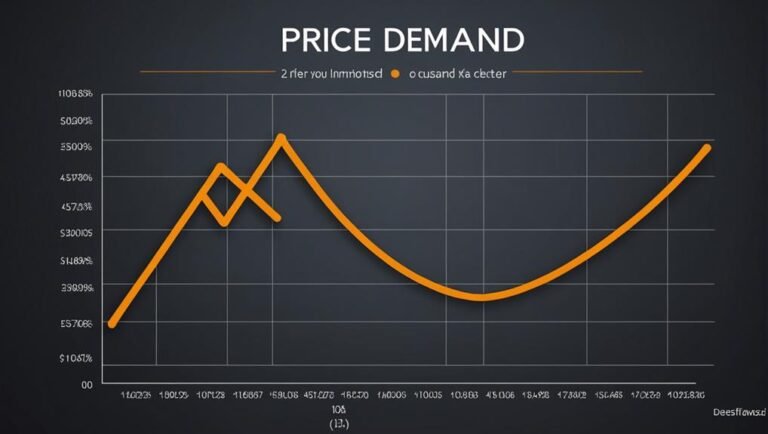Capitalization Rate: Cap Rate Defined With Formula and Examples
Capitalization rate, or Cap Rate, is an essential metric in commercial real estate, indicating the anticipated return on an investment property. It is calculated by dividing the property's net operating income by its current market value. Cap rates fluctuate based on market conditions, property location, and trends, influencing income potential and property value. Understanding Cap Rate is important for evaluating risk, profitability, and aligning investment decisions with financial goals. Higher Cap Rates may suggest higher risk with potentially lower returns, while lower Cap Rates could imply lower risk but also lower returns. Cap Rate ranges from below 4% to above 10%, reflecting varying levels of risk and return profiles.
Key Takeaways
- Cap rate is the expected rate of return in commercial real estate.
- Calculate by dividing net operating income by current market value.
- Market trends impact property value and income potential.
- Cap rates fluctuate based on market conditions and location.
- Essential for evaluating ROI and making informed investment decisions.
Definition of Capitalization Rate
Utilizing a gerund noun to enhance clarity and conciseness, the definition of the capitalization rate in commercial real estate signifies the expected rate of return on an investment property.
Calculation precision is vital in determining the capitalization rate, as it is derived by dividing the property's net operating income by its current market value.
Market trends play a significant role in this calculation, as they directly impact the property's value and income potential.
It is important to note that cap rates are not stagnant and can fluctuate based on various factors such as market conditions, property location, and overall economic outlook.
Understanding these dynamics is essential for investors looking to make informed decisions in the real estate market.
Importance of Cap Rate Calculation
The calculation of the capitalization rate plays a crucial role in evaluating the potential return on investment properties in commercial real estate. Understanding the cap rate is essential for investors to make informed decisions regarding their investment strategies.
By analyzing the cap rate, investors can assess the risk and profitability of different properties, guiding them in selecting assets that align with their financial goals. Additionally, cap rates provide insights into market trends, indicating the prevailing conditions in specific real estate markets.
Investors can use this information to compare opportunities and make strategic investment choices based on current market conditions. Overall, the cap rate calculation is a fundamental tool that influences investment strategies and helps investors navigate fluctuating market trends.
Factors Influencing Cap Rate
Factors influencing the capitalization rate in commercial real estate include location, market dynamics, property characteristics, and investment climate. Market analysis plays an important role in determining cap rates, with high-traffic areas often commanding higher rates due to increased demand. Investment strategy is essential, as competitive markets generally result in lower cap rates.
Local market growth trends greatly impact the long-term cap rate outlook. Property-specific factors such as capital investments, property age, tenant quality, and prevailing market rates also affect cap rate calculations. Understanding these influences is key when formulating an investment strategy.
Investors should conduct thorough market analysis to assess these factors accurately and align their investment decisions with the prevailing market conditions.
Interpreting Cap Rate Values
When analyzing commercial real estate investments, interpreting cap rate values provides vital insights into the property's potential profitability and risk assessment. Cap rates serve as a pivotal metric for investment analysis, indicating the relationship between the property's net operating income and its market value.
Higher cap rates typically suggest higher levels of risk due to potentially lower property valuations or income generation, while lower cap rates may imply lower risk but potentially lower returns. Understanding these nuances is essential for investors to make informed decisions about the profitability and risk associated with a particular property.
Cap rate values are fundamental in evaluating the investment landscape and should be carefully assessed alongside other financial metrics to ensure a thorough investment analysis.
Significance of Cap Rate Range
Analyzing Cap Rate Ranges: An essential element in real estate investment evaluation is understanding the significance of cap rate ranges as they indicate the risk-return profile of a property. When considering cap rates, investors should evaluate the range within which a property falls to gauge its investment risk and compare it to market standards. Below is a table illustrating the significance of cap rate ranges in investment decision-making:
| Cap Rate Range | Significance |
|---|---|
| Below 4% | Low-risk, potentially overvalued |
| 4% – 6% | Moderate risk, market average |
| 6% – 8% | Moderate to high risk |
| 8% – 10% | High-risk, potentially undervalued |
| Above 10% | Very high risk, requires careful evaluation |
Understanding these cap rate ranges helps investors make informed decisions by evaluating the investment risk relative to market comparison.
Examples of Cap Rate Calculation
In the domain of commercial real estate investment analysis, exemplifying the calculation of cap rates through practical scenarios provides a tangible understanding of the concept's application. Real estate trends play a significant role in determining cap rates, with investment strategies heavily relying on accurate calculations.
For instance, a property with a net operating income of $100,000 and a market value of $1,000,000 would yield a cap rate of 10%. This calculation showcases how changes in net operating income or property value can impact the cap rate, influencing investment decisions.
Understanding these examples aids investors in evaluating potential properties based on current market conditions and aligning their investment strategies with prevailing real estate trends.
Applying Cap Rate in Real Estate
Utilizing the capitalization rate in real estate investment analysis provides a quantitative framework for evaluating potential properties based on their expected rate of return. Real estate trends play a significant role in determining cap rates, with factors such as location, market demand, and property type influencing these rates.
Investment strategies often revolve around identifying properties with favorable cap rates that align with investors' risk tolerance and return objectives. Understanding market dynamics and adjusting investment strategies accordingly is paramount for maximizing returns in real estate ventures.
Conclusion
To sum up, it is worth noting that the capitalization rate, or cap rate, plays a crucial role in evaluating the potential return on investment properties. This metric is determined by dividing the property's net operating income by its asset value.
It is noteworthy that a study found that properties in high-demand areas tend to have lower cap rates, indicating greater investor confidence in long-term value appreciation.
Understanding and applying cap rate analysis is essential for making informed real estate investment decisions.







